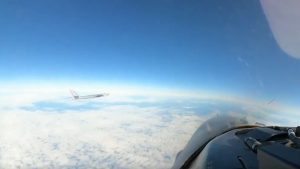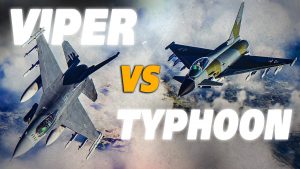Reviews
User Score
Rate This
Descriptions:
The North American Aviation XB-70 Valkyrie was the prototype version of the proposed B-70 nuclear-armed deep penetration bomber for the United States Air Force’s Strategic Air Command. Designed in the late 1950s, the Valkyrie was a large six-engined aircraft able to fly at beyond Mach 3 at an altitude of 70,000 ft (21,000 m), which would have allowed it to avoid interceptors, the only effective anti-bomber weapon at the time.
Two XB-70 prototypes were built for the U.S. Air Force. The aircraft program’s high development costs, and changes in the technological environment with the introduction of effective high-altitude anti-aircraft missiles, led to the cancellation of the B-70 program in 1961. Although the proposed fleet of operational B-70 bombers was never built, the XB-70A aircraft were used in supersonic test flights from 1964 to 1969, performing research for the design of large supersonic aircraft. One prototype crashed following a midair collision in 1966; the other is on display at the National Museum of the United States Air Force in Ohio.
The XB-70 was designed to be a high-altitude bomber-sized Mach 3 experimental aircraft with six engines. Harrison Storms shaped the XB-70 with a canard surface and a delta wing, which was built largely of stainless steel, sandwiched honeycomb panels, and titanium. The XB-70 was designed to use supersonic technologies developed for the Mach 3 Navaho, as well as a modified form of the SM-64 Navaho’s all-inertial guidance system.
The XB-70 was equipped with six General Electric YJ93-GE-3 turbojet engines, designed to use JP6 jet fuel. The engine was stated to be in the “30,000-pound class”, but actually produced 28,000 lbf (124.6 kN) with afterburner and 19,900 lbf (88 kN) without afterburner.
The Valkyrie first became supersonic (Mach 1.1) on the third test flight on 12 October 1964, and flew above Mach 1 for 40 minutes during the following flight on 24 October. The wing tips were also lowered partially in this flight. XB-70 #1 surpassed Mach 3 on 14 October 1965 by reaching Mach 3.02 at 70,000 ft (21,300 m).
Honeycomb panel deficiencies discovered on XB-70 #1 were almost completely solved on XB-70 #2, which first flew on 17 July 1965. On 3 January 1966, the second XB-70 attained a speed of Mach 3.05 while flying at 72,000 ft (21,900 m). XB-70 #2 reached a top speed of Mach 3.08 and maintained it 20 minutes on 12 April 1966.
On 19 May 1966, XB-70 #2 reached Mach 3.06 and flew at Mach 3 for 32 minutes, covering 2,400 mi (3,840 km) in 91 minutes of total flight.
The XB-70 flight test data and materials development aided the later B-1 Lancer supersonic bomber program, and, through intelligence, the Soviet Tupolev Tu-144. The development programs for numerous US military aircraft (B-70, SR-71, and U-2) led the Soviet Union to develop the Mikoyan-Gurevich MiG-25 interceptor.







